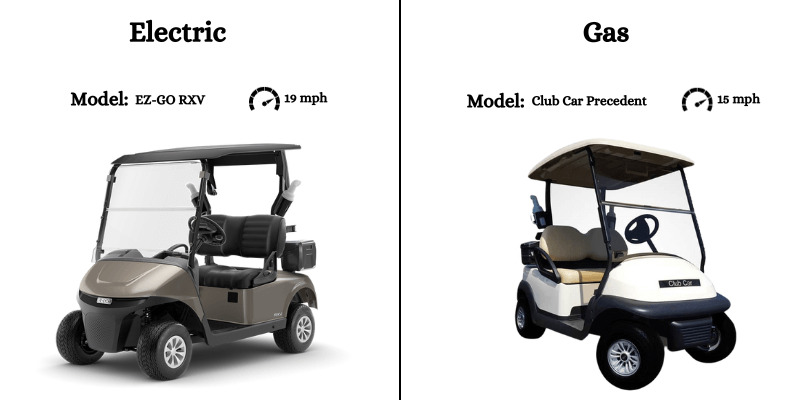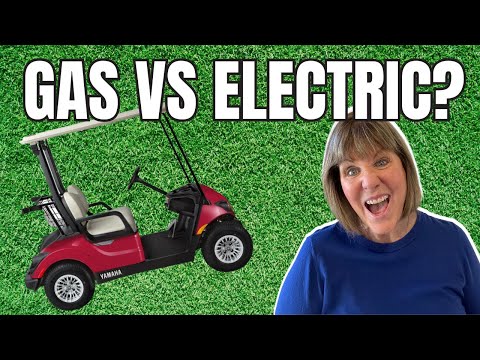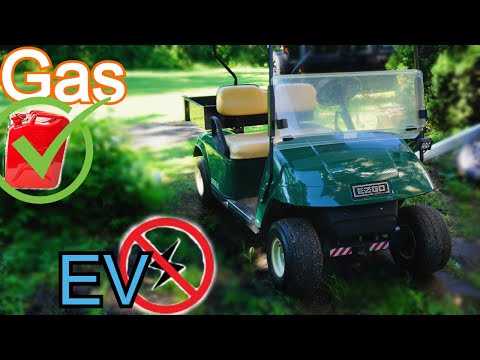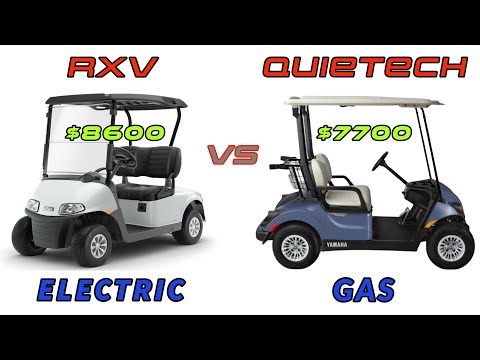Content Menu
● Understanding Golf Carts
● The Basics of Gas Golf Carts
● The Basics of Electric Golf Carts
● Pros and Cons of Gas Golf Carts
>> Pros
>> Cons
● Pros and Cons of Electric Golf Carts
>> Pros
>> Cons
● Key Considerations When Choosing
>> Usage Environment:
>> Maintenance Preferences:
>> Environmental Concerns:
>> Budget Constraints:
>> Performance Needs:
● Conclusion
● Frequently Asked Questions (FAQ)
>> 1. What is the average lifespan of an electric golf cart battery?
>> 2. Can I convert my gas golf cart to electric?
>> 3. How much does it cost to maintain a gas golf cart?
>> 4. Are there any restrictions on using gas golf carts in certain areas?
>> 5. Can I charge my electric golf cart at home?
Choosing between a gas or electric golf cart is a significant decision for many golf enthusiasts and casual users alike. Each type has its unique advantages and disadvantages, which can affect your overall experience and satisfaction. In this article, we will delve into the pros and cons of both gas and electric golf carts, helping you determine which option best fits your needs.

Understanding Golf Carts
Golf carts are small vehicles designed primarily for transporting golfers and their equipment around a golf course. However, their utility extends beyond the greens; they are also used in gated communities, farms, and even for personal transport in various settings.
The Basics of Gas Golf Carts
Gas golf carts operate using an internal combustion engine that runs on gasoline. They typically have a higher power output compared to electric carts, making them suitable for hilly terrains and longer distances. Here are some key features:
- Powerful Performance: Gas carts generally offer better acceleration and can handle steep hills with ease.
- Extended Range: With a fuel tank capacity of 4 to 6 gallons, gas carts can travel between 100 to 180 miles on a single tank.
- Quick Refueling: Refueling a gas cart takes only a few minutes, allowing for minimal downtime.
- Lower Initial Cost: Gas carts often have a lower upfront purchase price compared to electric models.
The Basics of Electric Golf Carts
Electric golf carts are powered by batteries and are known for their quiet operation. They are increasingly popular due to their eco-friendliness and lower operational costs. Here are some key features:
- Eco-Friendly: Electric carts produce zero emissions during operation, making them environmentally friendly.
- Quieter Operation: They operate silently, providing a more peaceful golfing experience.
- Lower Maintenance Costs: With fewer moving parts, electric carts require less maintenance than gas models.
- Cost-Effective Over Time: While they may have a higher initial purchase price, the long-term costs (including maintenance and fuel) tend to be lower.

Pros and Cons of Gas Golf Carts
Pros
- Higher Power Output: Ideal for steep hills and rough terrains.
- Longer Range: Suitable for longer trips without needing to recharge.
- Quick Refueling: Less downtime compared to charging an electric cart.
Cons
- Environmental Impact: Emits exhaust gases contributing to pollution.
- Higher Operating Costs: Fuel prices can add up over time.
- Maintenance Needs: Requires regular oil changes and engine servicing.
Pros and Cons of Electric Golf Carts
Pros
- Eco-Friendly Operation: No emissions during use.
- Lower Noise Levels: Ideal for use in quiet environments.
- Reduced Maintenance Requirements: Fewer parts mean less frequent repairs.
Cons
- Limited Range: Typically can travel 15 to 25 miles on a single charge.
- Charging Time: Requires several hours to fully recharge the batteries.
- Potential Battery Replacement Costs: Batteries may need replacement every 5 to 10 years, which can be costly.

Key Considerations When Choosing
When deciding between a gas or electric golf cart, consider the following factors:
Usage Environment:
- If you plan to use the cart on hilly terrains or for longer distances, a gas cart may be more suitable.
- For flat courses or short distances in residential areas, an electric cart could be ideal.
Maintenance Preferences:
- If you prefer lower maintenance requirements, an electric cart might be the better choice.
- Gas carts require regular servicing that could be more demanding over time.
Environmental Concerns:
- If reducing your carbon footprint is important to you, electric carts are the clear winner due to their zero-emission operation.
Budget Constraints:
- While gas carts may be cheaper initially, consider long-term costs including fuel and maintenance when making your decision.
- Electric carts may have higher upfront costs but lower operational expenses over time.
Performance Needs:
- For those who prioritize speed and power, especially in rugged terrain or for heavy loads, gas golf carts excel.
- Electric carts provide smooth acceleration but may not match the power of gas engines in demanding conditions.
Conclusion
In summary, both gas and electric golf carts have their strengths and weaknesses. Your choice should depend on your specific needs—whether you prioritize power, range, environmental impact, or maintenance ease. For casual users who primarily play on flat courses or within communities where noise is a concern, electric carts often make more sense. On the other hand, if you require a powerful vehicle for varied terrains or longer distances, gas-powered options might be more appropriate.

Frequently Asked Questions (FAQ)
1. What is the average lifespan of an electric golf cart battery?
Electric golf cart batteries typically last between 5 to 10 years depending on usage and maintenance practices.
2. Can I convert my gas golf cart to electric?
Yes, conversions are possible but can be complex and costly; it may be more practical to purchase an electric model instead.
3. How much does it cost to maintain a gas golf cart?
Maintenance costs vary but generally include regular oil changes, filter replacements, and potential repairs that can add up over time.
4. Are there any restrictions on using gas golf carts in certain areas?
Yes, many communities have regulations limiting or banning the use of gas-powered vehicles due to environmental concerns; always check local laws before purchasing.
5. Can I charge my electric golf cart at home?
Yes, most electric golf carts can be charged at home using standard electrical outlets; however, ensure your electrical system can handle the load safely.











































